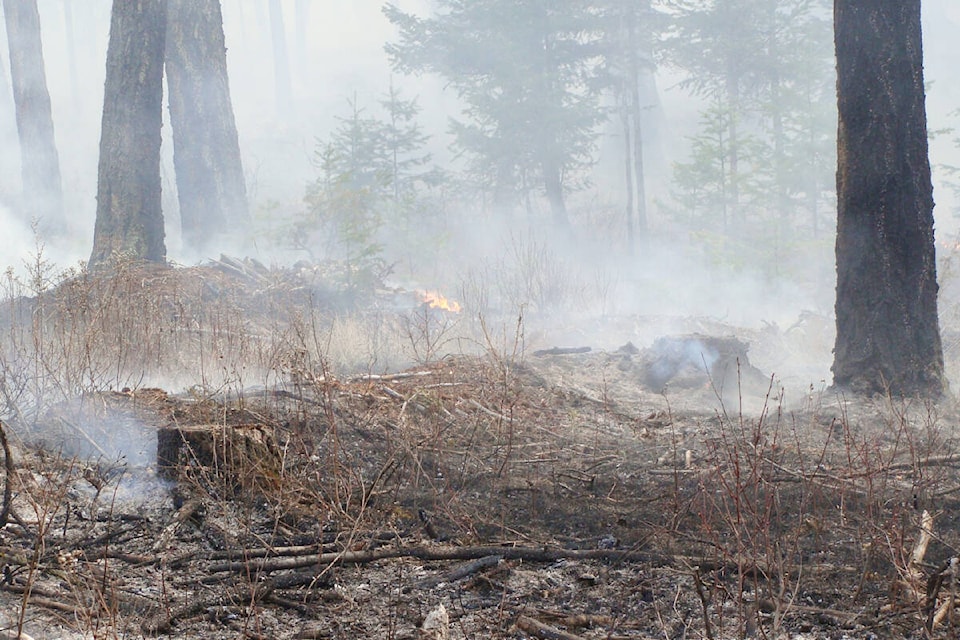In previous articles I introduced readers to the Williams Lake and Area Community Wildfire Protection Plan (WLCWPP) and described the events of the Feb. 20, 2024 roundtable. I was scheduled to attend my second roundtable meeting on May 15, 2024 which started with a field tour of a spring prescribed burn at the Bond Lake and Highway 20 intersection.
I was familiar with this burn since I happened to be passing by the day of the burn and had a chance to talk to Dylan Simpson, burn boss trainee with BC Wildfire Service (BCWS). By the time I arrived, crews were mopping up putting out the smouldering stumps and other smouldering material while Dylan indicated it was not optimal burning conditions due to high relative humidity and trace amounts of rain, the site conditions were still within the burn plan parameters and objectives were successfully met.
During our May 15, 2024 field day Peter Holub described this as a category four burn resource management category which is part of the new management approach to these interior Douglas-fir stands which include mule deer winter range objectives, hazard reduction objectives of the WLCWPP and ecological restoration.
Questions from the participants included was there sufficient protection of the small diameter fir trees to meet future restocking and were forest floor materials reduced sufficiently to minimize future wildfires? While a few of the saplings were scorched by the fire the consensus was the few that were scorched may survive and most potential fuels had been reduced sufficiently.
Additional topics were discussed later during the roundtable which took place at the Williams Lake Fire Department meeting room. In order to set the stage for future discussions, Kristi Iverson, research vegetation ecologist Ministry of Forests Cariboo region gave a slide presentation entitled Past, Present and Future Forests in the Interior Douglas-fir.
She started by describing how First Nations cultural burning practices maintained a much more open forest environment then used air photos taken decades apart of the same area to show how the forests became much more dense and prone to more severe wildfires.
She also described how fire ecologists have used tree ring studies and fire scarring to show there are generally low, moderate and severe classes of fires with the intense fires occurring during drought periods. It turns out that many of the First Nations cultural burning was intended to meet many similar objectives we have for our forests today. For example, increase preferred plant species, improve wildlife habitat, fire-proofing of areas around winter villages, fish camps and travel corridors.
She also showed some stands that had been thinned for growth performance impacts had withstood the impacts of the 2017 wildfires relative to the adjacent untreated stands with much more fuel loading.
The remainder of the meeting was to update attendees with the progress being made on the WLCWPP including such things as land act amendments, establishing best management practices, have more pilot projects and landscape level planning.
